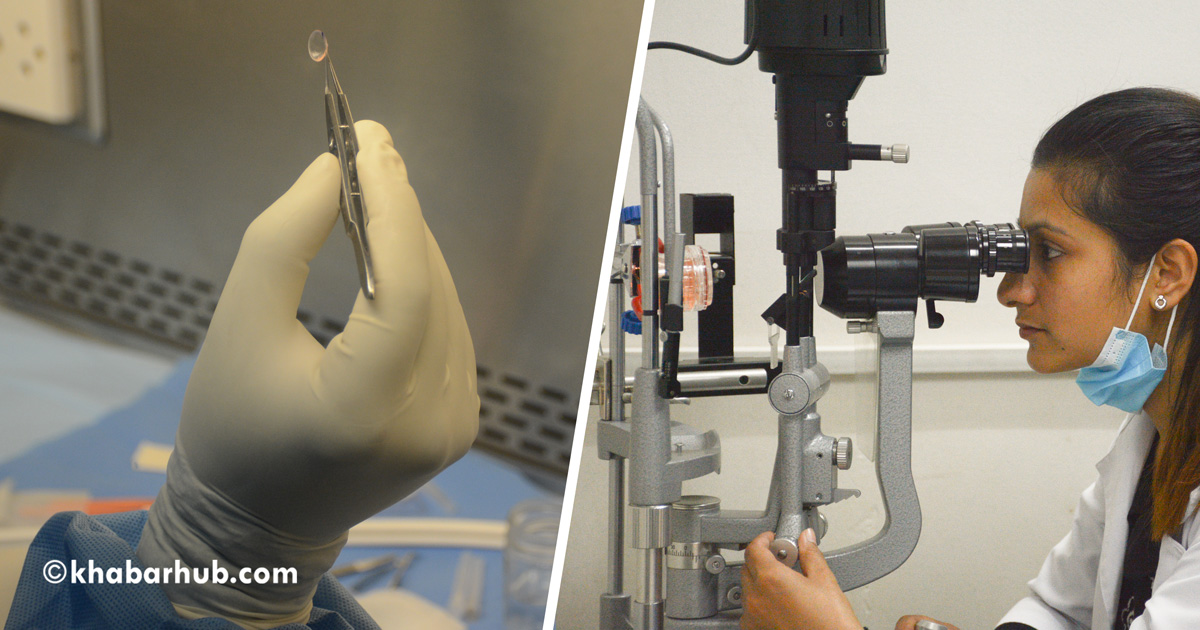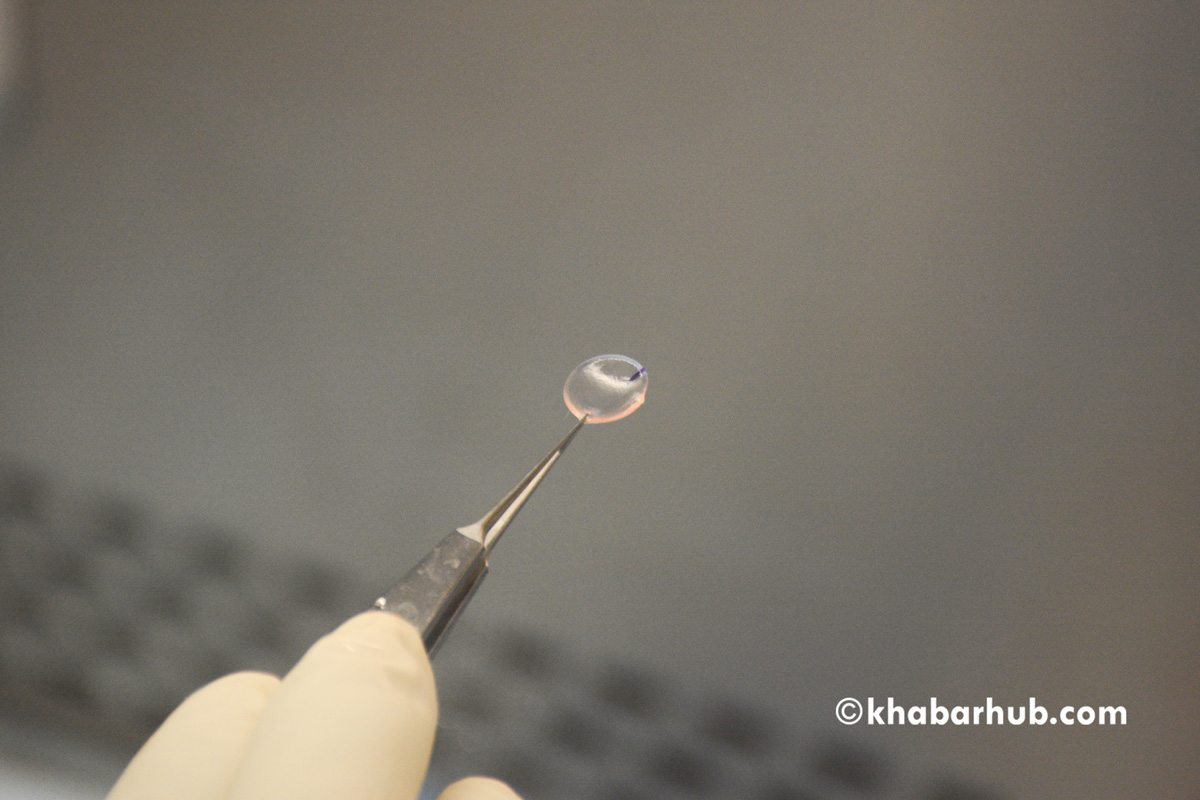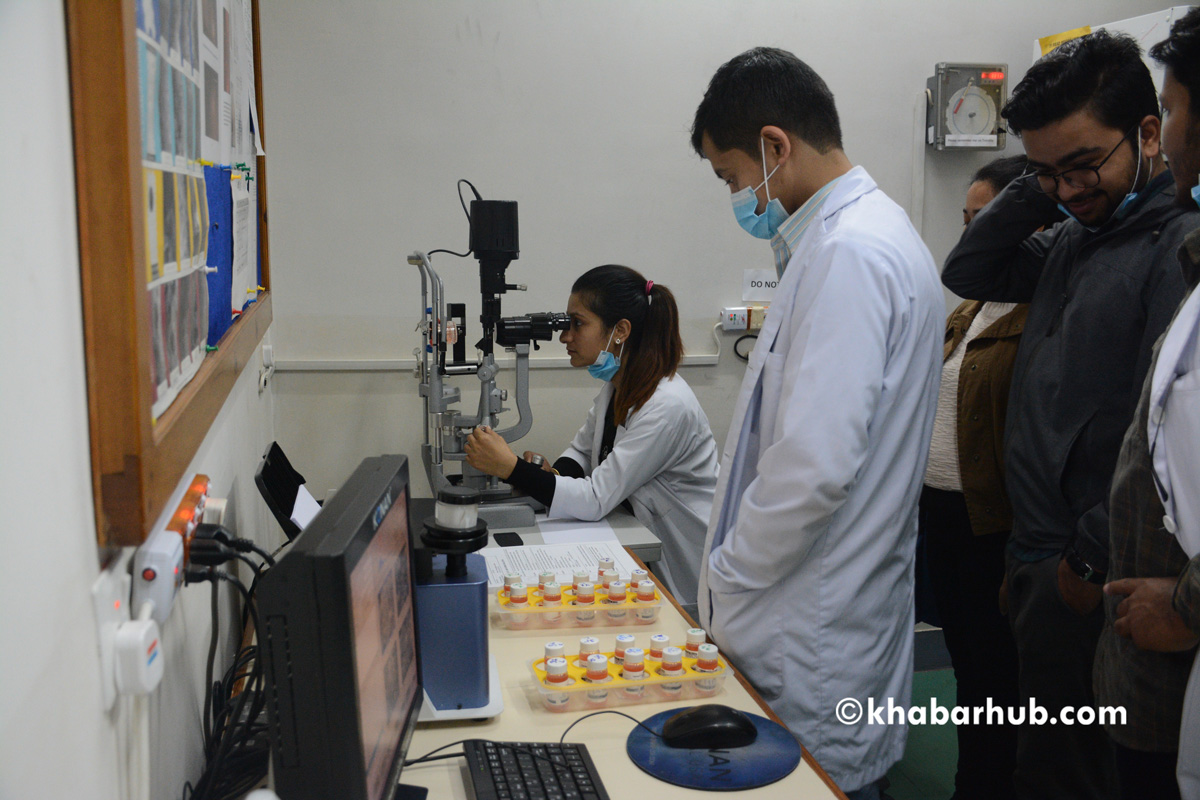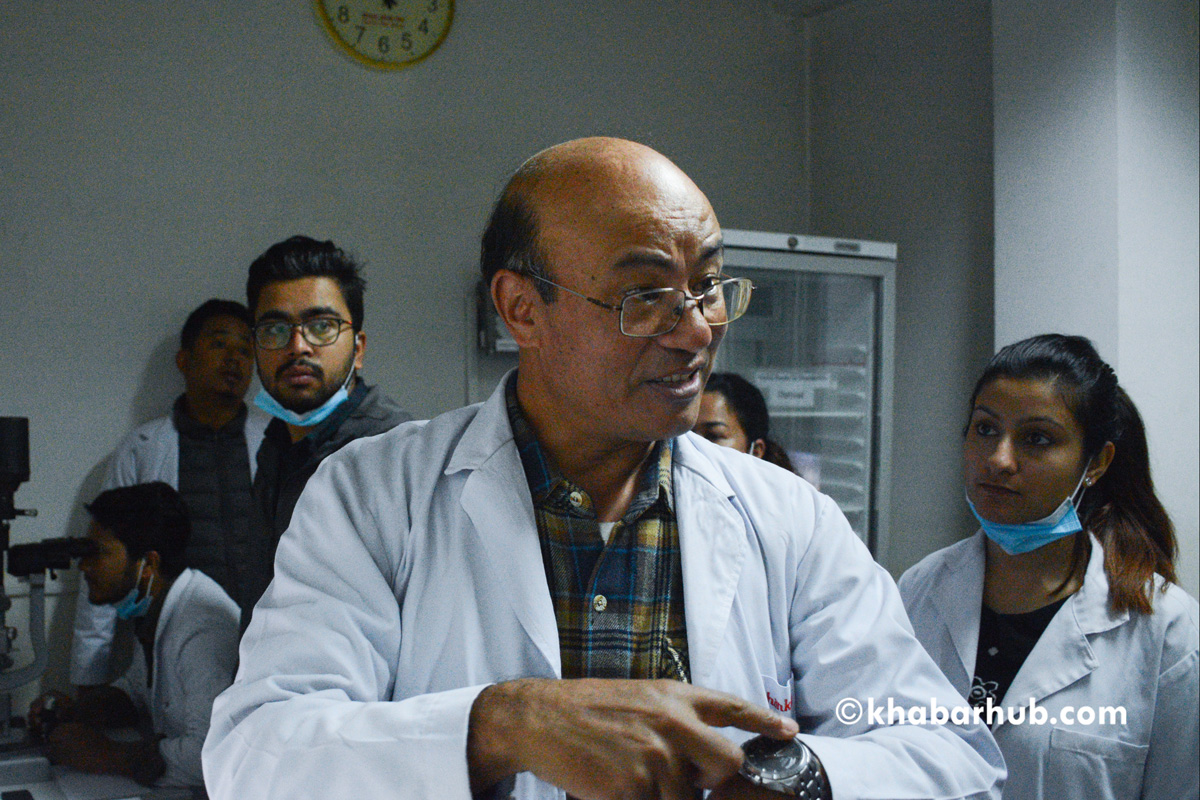0%

KATHMANDU: Nepal has made miraculous achievements in eye care sector. The vision at the establishment of Eye Bank on Sept. 16, 1994, is getting materialized with the successful transplantation of thousands of people and pledges for donation from more than 80,000 people.
Anyone can be the part of vision restoring campaign launched for the public. Many people are not aware about the fact that they can see the world even after their death. If you are interested in letting your eyes see the world even after your death, you have a way: donate your eyes.
Tilganga Institute of Ophthalmology (TIO) is working in the mission of restoring vision in thousands of eyes, with Sanduik Ruit with his record of restoring eye sight to more than 100000 people worldwide.

Now, TIO has been providing vision to 4 persons from 1 cornea donated to it. Nepal Eye Bank, located at Tilganga Institute of Ophthalmology, adopted the technology of providing this facility since last year.
However, what one should keep in mind is that not everyone can be a donor. Last year 4 persons benefitted from two eyes of a man. According to Shankha Narayan Twayana, the manager of the Eye Bank, the bank has used the eyes of 15 persons to restore light in 60 people’s eyes.
“Using this technology, we have provided light to 60 persons,” said Twayana to Khabarhub, “Some American experts had been to our hospital to provide the training to of our surgeons.”
According to him, those 12 surgeons are in various hospitals like Tilganga, Biratnagar, Bharatpur and Lahan.
Eye donation: Procedure and Eligibility
Once the people willing to donate eyes fill up the form and submit it to Eye Bank, the Bank maintains the record of it. The day the news about the demise of such donors is sent to the Bank, the Bank representatives reach at the site and extract the eye or cornea within 8 hours of the death.

When the eye is donated for research purpose, as per the contract whole eye is extracted, however, in case of cornea donation, the cornea is extracted within 8 hours. The cornea should reach at the storage media within 24 hours. Generally, the lifespan of such cornea is 14 days.
After the eyes are extracted, the bank representative conduct various tests to find out whether the person has any symptoms of HIV +ve, Hepatitis B, Hepatitis C etc. Then, another test is conducted to see which part of the eye is worth using or fit for transplantation. After this test, another test is carried out to explore more about the condition of various cells in the cornea. If the eye is found to be healthy, then it is taken to ‘Lymilar tissue processing room.’
According to Dr. Yajan Raj Bhandari, an eye banking trainer at the Bank, the process of preparing one person’s eyes for 4 people takes nearly 20 minutes. “An eye has five layers,” says Dr. Bhandari explaining the eye structure, “the eye prepared using the lymilar tissue processing technology can be placed on the upper or lower part of the eye and restore vision in the eyes.” It is said that the lens prepared this way has better vision then others.
“Since last year, we have been using this technology to provide sight to 4 persons from 2 eyes. We have to handle the procedure very rationally, considering the delicacy and sensitiveness of the issue.” Trainer Bhandari further added.
“We use a machine consisting nitrogen gas. Through the ‘turbine’, the gas cuts the layers of eyes. The technician involved in tissue processing has to extract the layers very sensitively. One has to cut the layers within 2-4 seconds,” he tried to explain the nature of delicacy and sensitiveness of the procedure.

The pachymeter is used to measure the thickness of layer before and after their extraction from the eye. This measure helps the technician decide which part of the eyes it should be fitted to. At the query on how it is identified whether the lens is to be used at the upper and lower part, Bhandari told Khabarhub that to differentiate the lenses they use colors that do not harm the eyes.
80 thousands Nepalis, committed for donation
The bank was sans visitors in the beginning but for Chini Maya Tuladhar, Kathmandu, who turned out to be the first person to donate both eyes. Now, the bank has received the commitment for donation from more than 80,000 people.
According to Twayana, the Bank Manager, the bank has been receiving around 1300 eyes every year out of which 1200 eyes are found transplantable. The bank data shows that more than 12000 blinds of Nepal have found new life with the donated eyes.

When it comes to eye donation, Nepal Eye Bank has an impressive story share now.
“Then, the corneas were excised from a dead body in the open at the cremation site at Pashupatinath temple,” manager Twayana cites the bank’s history, “it was really difficult when dozens of eyes looked at wonder why those white robed doctors were extracting the parts of the dead body.”
Later, the Lions Club of Pashupatinath, and Pashupatinath Area Development Trust came to help the campaign and arranged for the establishment of a better Eye Donation Information Center and Cornea Excision Center at Bhasmeswar Ghat at Pashupati. The center has been a key place to provide information and counselling services esp. to the relatives of the dead people.
It is reported that Dr. Sanduk Ruit, the Founder and Executive Director of TIO, the doctor who has restored sight to more than 1, 30,000 people had worked very hard to convince both the Hindus and Buddhists people then.

The success in the eye transplantation sector has made Nepal get a distinct and dignified identity in eye care now.